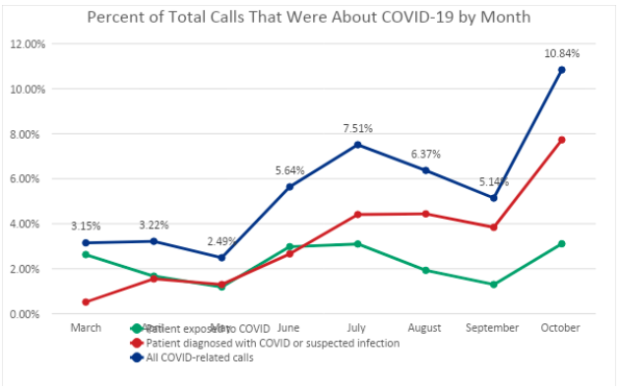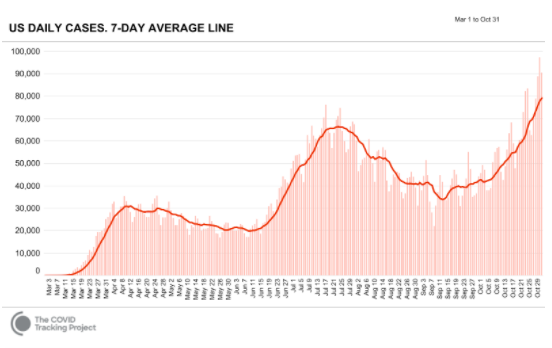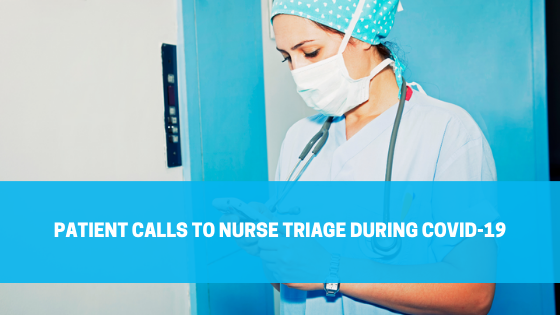The COVID-19 pandemic has increased telemedicine visits as patients and doctors try to stop the spread of infection. The CDC reports that telemedicine visits increased by more than 50% during the first months of the pandemic. Triage nurses can work closely with doctors to provide a safe and effective way to direct patients to the appropriate level of care and help save lives. We studied data from our nurse triage call centers to look at how many patients were calling about COVID-19 throughout the pandemic.
When a patient calls a nurse triage line, they are asked to describe their chief complaint to the triage nurse. Using the information provided by the patient, the nurse then chooses the protocol that aligns with the chief complaint and triages the patient appropriately. If patients called with a COVID-related symptom only, they were triaged using one of two protocols. If the patient was experiencing more serious or potentially urgent medical symptoms, they may have been triaged under an alternate protocol, even if they told the nurse they were exposed or diagnosed with COVID.
The descriptions are as follows:
COVID Exposure:
- Exposed (close contact) to a person who has been diagnosed (confirmed by testing) or suspected to have COVID-19.
- Patient has no common COVID-19 symptoms (i.e., cough, fever, shortness of breath, muscle aches)
- Questions about COVID-19
COVID Diagnosed or Suspected
- Diagnosis was confirmed by positive lab test OR
- Clinical diagnosis (suspected diagnosis) was made by healthcare provider (HCP) OR
- Patient or caregiver suspects COVID-19 based on symptoms consistent with COVID-19 and recalls close contact with a person with COVID-19 in the past two weeks, or is living in an area of community spread.
In Figure 1 we look at COVID-related calls as a percentage of the total calls received by our call centers for the months in our study. We also break down COVID-related calls to study the number of patients calling about exposure versus those calling about diagnosis. Figure 2 presents data on the total number of daily confirmed COVID cases by day in the United States.

- Figure 1

- Figure 2
Source: https://covidtracking.com/data/charts/us-daily-positive – Table downloaded from The COVID tracking project
We find that increases in the relative number of patients calling our nurse triage service about COVID closely mirror the peaks in the total number of cases in the United States. As COVID cases spiked, more patients began calling nurse triage. We note a relatively high number of COVID-related calls in March compared to the total number of cases. In our analysis of COVID-diagnosed versus exposed callers in Figure 1, we find that the number of calls about exposure remain relatively constant across the pandemic. However, the number of COVID diagnosed or suspected patients increased steadily throughout the pandemic. After April 2020, the majority of patients who called the nurse triage service were either already diagnosed with COVID-19 or suspected that they had contracted the virus.
This may be largely due to widespread public knowledge about the symptoms of COVID. As the general population became more educated about the symptoms of COVID, they became better at identifying whether or not they had the virus and only called the triage nurse if they were concerned about their symptoms. This may also explain why there was a higher rate of calls about potential COVID exposure at the beginning of the pandemic, when patients had less knowledge about the virus. Patients may have been more likely to call the triage nurse in order to determine if they had the virus rather than only calling when they had specific questions about the severity of their symptoms.
Triage nurses can remotely screen patients using standardized protocols via mediums like our comprehensive nurse triage software and determine the appropriate level of care or providing reassurance. Identifying who needs urgent care first allows doctors to allocate precious resources and time efficiently.
To read more information on the data collected during the pandemic, check out our ebook here. It’s filled with detailed, important information for understanding patient responses to this health emergency.





